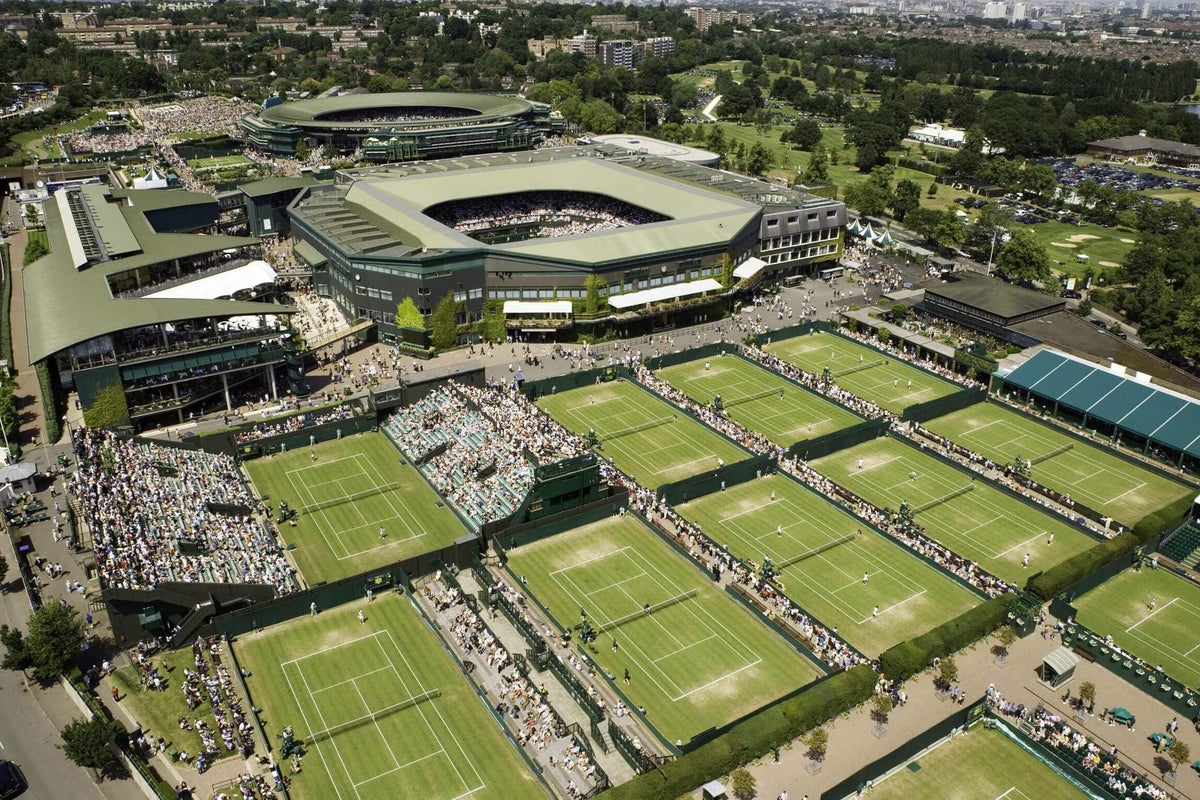Wimbledon secured a major victory in its bid to triple the size of its grounds after the High Court ruled on Monday that the General London Assembly (GLA) was lawful in granting planning permission for 39 new courts last September.
Mr Justice Saini made this ruling in a judicial review, overriding the concerns of local residents who appealed against the GLA’s granting of planning permission to build the new grass courts, one of them an 8,000-seater stadium court, on the old Wimbledon Park golf course.
The All England Lawn Tennis Club (AELTC), which hosts Wimbledon, bought the Wimbledon Park golf course land from Merton council for £5.2million ($6.6million) in 1993. The AELTC then purchased the Wimbledon Park golf club, whose lease was to expire in 2041, for £65m in 2018. This led to each member receiving £85,000.
In December 2024, three months after the GLA’s granting of planning permission at a hearing at City Hall, campaign group Save Wimbledon Park (SWP) instructed lawyers to challenge the decision. The AELTC simultaneously announced its intention to take its own plans to the court system, in a bid to head off any challenge.
In January, the SWP formally confirmed its legal challenge to the Wimbledon plans, which are designed, the AELTC has reiterated, to keep it on equal footing with the other three Grand Slam tournaments: the Australian, French, and United States Opens.
Wimbledon is the only Grand Slam that does not host its qualifying competition on site, and AELTC chair Deborah Jevans, said in a briefing with reporters last month that the need for the transformation “becomes ever more apparent as we see our fellow Grand Slams staging fully integrated three-week events by welcoming many more spectators and staging charity and community events during the qualifying week and, crucially, providing the players with a stage benefiting their sporting excellence.”
On July 8 and July 9, during the second week of this year’s Wimbledon, the United Kingdom High Court heard both sides’ arguments.
150 supporters outside the Royal Courts of Justice. Let Justice be done pic.twitter.com/Qc938oafSx
— Save Wimbledon Park (@SaveWimbldnPark) July 8, 2025
Hundreds of campaigners gathered outside the court on Monday in a show of support for objections to planning consent that will cost the AELTC around £200m and they believe will damage the local area.
“This judgment would, if it stands, set a worrying precedent for the unwanted development of protected green belt and public open spaces around London and across the country,” Christopher Coombe, Director of SWP, said in a statement issued on Monday.
“The AELTC will surely have noted the considerable public outrage about this development, most recently expressed outside the law courts, and we continue to hope that they could be persuaded to engage constructively with us, with a view to achieving a resolution of this four-year-old dispute.”
In a press release, SWP stated that it “will continue, with the aid of its many supporters, to fight for the right future for Wimbledon Park.”
It referred once again to the fact that when the AELTC bought the Wimbledon Park golf course land 32 years ago, it signed a covenant agreeing that it would not use the land “other than for leisure or recreational purposes or as an open space”. The belief that the AELTC’s proposals are in violation of this has been a core argument for those opposing its expansion.
That is a legal obstacle that the AELTC still has to overcome. There will be a separate hearing on the matter in January 2026 after an appeal to the courts for the case to be expedited was granted. But Monday’s verdict reinforces the view of London’s deputy mayor for planning, Jules Pipe, who said at the September hearing that the proposals “would facilitate very significant benefits” which “clearly outweigh the harm.” Mayor of London Sadiq Khan recused himself from the process three years ago, having previously expressed support for the proposals.
“This is welcome news that will cement Wimbledon’s reputation as the greatest tennis competition in the world and London as the sporting capital of the world,” Khan said in a statement following Monday’s news. “This scheme will bring a significant range of economic, social, cultural and environmental benefits to the local area, the wider capital and the UK economy, creating new jobs and green spaces.”
“We are delighted that Mr Justice Saini has dismissed the challenge to the GLA’s decision to grant planning permission for our plans to transform the former Wimbledon Park golf course,” Jevans also said in a statement on Monday.
“It is clear that we have a robust planning permission that enables us to create a permanent home for the Wimbledon qualifying competition as well as delivering 27 acres of beautiful new parkland for local people, providing public access to land that has been a private golf course for over 100 years.
“We have spoken to more than 10,000 people who have taken the time to come in person and understand our plans in detail. The vast majority of people just want us to get on and deliver the many benefits on offer as soon as possible.
“We now turn our attention to separate legal proceedings to give everyone reassurance that there is not, nor has there ever been, a statutory trust over the former golf course land. This hearing is due to take place in January 2026.”
After the GLA’s verdict in September, Jevans told a few reporters that even if things went to plan, the new courts would not be ready until the 2030s.
(Photo: AFP via Getty Images)


